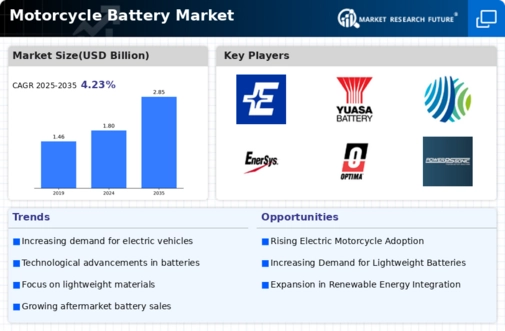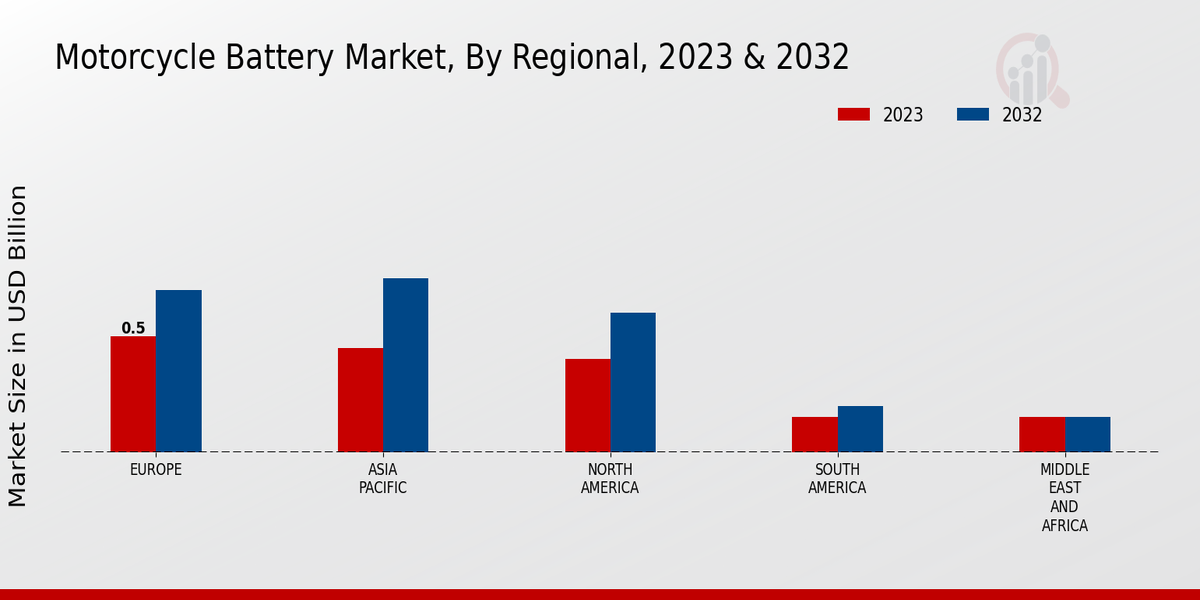Market Growth Projections
The Global Motorcycle Battery Market Industry is poised for robust growth, with projections indicating a market value of 1.8 USD Billion in 2024, escalating to 2.85 USD Billion by 2035. This trajectory suggests a compound annual growth rate (CAGR) of 4.25% from 2025 to 2035. Such growth is indicative of the increasing adoption of motorcycles, particularly electric models, and the corresponding demand for advanced battery solutions. The market dynamics are influenced by various factors, including technological advancements, regulatory frameworks, and changing consumer preferences.
Growth of the Aftermarket Segment
The aftermarket segment of the Global Motorcycle Battery Market Industry is witnessing substantial growth, driven by the increasing number of motorcycles on the road. As motorcycle ownership rises, so does the demand for replacement batteries and accessories. This trend is particularly pronounced in regions with a high density of motorcycle users. The aftermarket sector provides opportunities for manufacturers to diversify their product offerings and cater to a broader consumer base. With the market projected to grow from 1.8 USD Billion in 2024 to 2.85 USD Billion by 2035, the aftermarket segment is poised to play a crucial role in sustaining this growth.
Government Regulations and Incentives
Government regulations aimed at reducing carbon emissions are significantly influencing the Global Motorcycle Battery Market Industry. Many countries are implementing stricter emission standards and offering incentives for electric vehicle purchases, including motorcycles. These regulatory frameworks encourage manufacturers to innovate and produce cleaner, more efficient battery technologies. As a result, the market is expected to expand as consumers are incentivized to switch from traditional gasoline-powered motorcycles to electric alternatives. This shift is anticipated to contribute to the market's growth trajectory, aligning with global sustainability goals.
Increasing Demand for Electric Motorcycles
The Global Motorcycle Battery Market Industry is experiencing a notable shift towards electric motorcycles, driven by rising environmental concerns and government incentives. As consumers increasingly seek sustainable transportation options, the demand for electric motorcycles is projected to grow significantly. In 2024, the market is valued at 1.8 USD Billion, with expectations to reach 2.85 USD Billion by 2035. This growth reflects a compound annual growth rate (CAGR) of 4.25% from 2025 to 2035. The transition to electric motorcycles necessitates advanced battery technologies, thereby propelling the motorcycle battery market forward.
Rising Urbanization and Traffic Congestion
The phenomenon of rising urbanization is a critical driver for the Global Motorcycle Battery Market Industry. As urban populations swell, traffic congestion becomes a pressing issue, prompting individuals to seek alternative modes of transportation. Motorcycles, particularly electric ones, offer a practical solution to navigating crowded urban environments. This trend is likely to boost the demand for motorcycle batteries, as more consumers opt for motorcycles as a means of commuting. The convenience and efficiency of motorcycles in urban settings are expected to play a significant role in shaping market dynamics in the coming years.
Technological Advancements in Battery Technology
Technological innovations in battery technology are pivotal in shaping the Global Motorcycle Battery Market Industry. Enhanced battery performance, including increased energy density and reduced charging times, is crucial for meeting consumer expectations. Developments in lithium-ion and solid-state batteries are particularly noteworthy, as they offer longer lifespans and improved safety features. These advancements not only enhance the performance of electric motorcycles but also contribute to the overall growth of the market. As manufacturers invest in research and development, the market is likely to witness a surge in high-performance batteries, further driving consumer adoption.
























